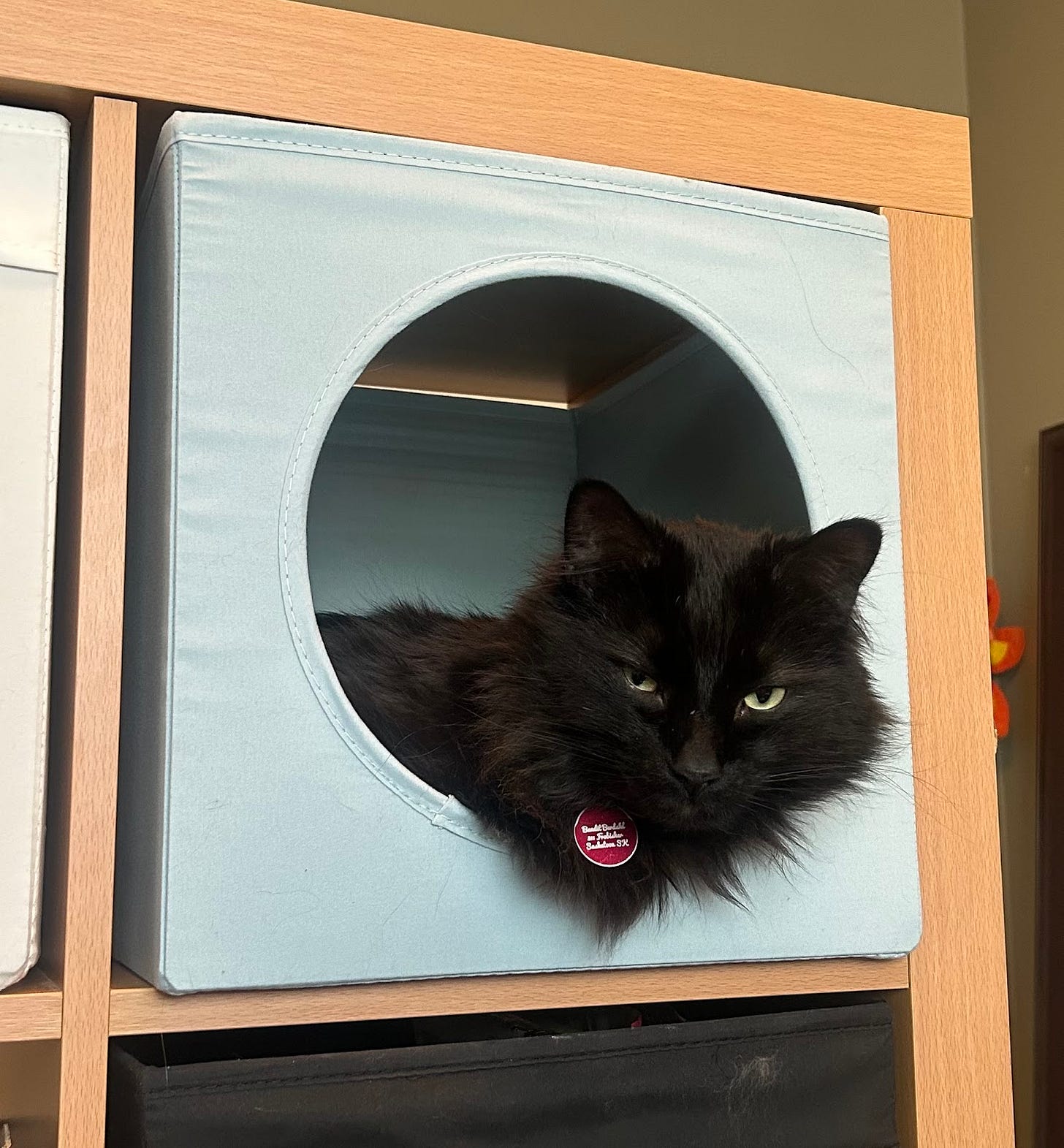Hello and welcome to Academia Made Easier. I am so glad that you are here.
Like many faculty members, I never planned on holding an academic leadership position. My goals focused on research, teaching, and avoiding meetings. But after a wave of faculty retirements, I found myself both as the only full professor in my department and with nowhere to hide.
It is often said that department head/chair is the most challenging leadership job in a university. As a former chair at another university once told me, “You get shit on from above and shit on from below. It is a shit job.” Well, that didn’t sound fun! To prepare myself for the role, I purchased C.K. Gunsalus’s The College Administrator’s Survival Guide. The title of the first chapter was foreboding: “Embrace Your Fate.” Other chapter titles were equally concerning: “Complaints”, “Bullies”, “Troubled Units”, “Problems, Rules, and Laws”, and “Violations”.
What had I gotten myself into?
I am happy to report that my experience as department head was much more positive than I expected. It was also a considerable amount of work and stress. On a family vacation a year into my term as head, I spotted an ad in a subway that captured my attention. “Bossface”, it read, showing a woman with worried eyes and an unconvincing smile. It was the facial expression I saw in the mirror many days.
I have continued in academic leadership for almost eight and a half years now. I do this work because I think it is important that faculty engage in academic service, including leadership. My good friend Shannon Dea summarizes this well: “You might wonder why someone … [would] take on an administrative job. The short answer is: collegial governance depends on it … collegial governance requires that the academic administration of universities is led by scholars who are themselves chosen by other scholars to take on that role…. If we want Canadian universities to continue to be collegially governed by scholars organized around the pursuit of truth, then it is crucial that scholars themselves are willing to assume university leadership roles.”
(Another reason I continue: at some meetings there are snacks available!)
Academic leadership exists at multiple levels and degrees of formality. While you may not have a formal role, you may still play a leadership role through your research or teaching initiatives. One important aspect of academic leadership is the opportunity to set the tone for (part of) the university. This tone can be one of kindness and care. This has been the approach I aim to embody, and it’s what today’s small thing to try immediately is all about.
One Small Thing to Try Immediately: Lead with care
This spring, I have had the great pleasure of writing a three-part series on emotional labour in academia with my good friend Christie Schultz. The first of the series, “Acknowledging the emotional labour of academic work”, argues that emotional labour is an important and too-often overlooked part of university work. The second, “The skills of care: navigating emotional labour in academia”, presents strategies for managing academic emotional labour. And in our third and final column, “Leading with care: emotional labour and academic leadership”, Christie and I discuss how academic leaders can bring care ethics into their leadership work.
As we explain in the column, academic leadership involves a lot of emotional labour, both in directly providing emotional labour and overseeing the emotional labour of team members. Leading with care offers a way for leaders to navigate this emotional labour.
What does leading with care mean? Christie and I suggest the following:
Recognizing emotional labour as work (and observing the patterns of this work at the university).
Acknowledging and valuing emotional labour.
Approaching care work and emotional labour with intention.
Maintaining a connection with teaching.
Centering people in academic work.
Whether you consider yourself to be an academic leader or not, I encourage you to read the article and share it with your network. It is important that universities begin to acknowledge emotional labour. Academic leaders can advance these discussions – and lead by example in their own leadership roles.
Until next time…
In some disciplines, June is a big conference month. If you have conferences in your near future, please check out some past newsletters that might be useful to you: “How to make work travel a bit easier”, “How to network at academic conferences”, and “How to deal with bully-discussants”. (Also relevant but not specifically about conferences: “How to pace yourself over the few months”.) And, unrelatedly, if your work involves social sciences or humanities graduate education, be sure to subscribe to my new Substack, “Reimagining Graduate Education”. My coauthors and I would love to connect with you there!
Stay well, my colleagues.
P.S. My last newsletter included a dog photo, so today’s needs a cat photo for balance. This is Bandit, supervising my work. To get to his spot, he jumped onto the back of my chair mid-Zoom meeting and launched himself up, directly hitting his target head on. And NO ONE on the Zoom call commented on his spectacular grace! Rude.
If you find Academia Made Easier useful, please consider supporting my chocolate habit through my Buy me a coffee page. This site allows readers to show their appreciation for the unpaid labour of writers like me, as well as artists and other creatives. 🍫🧁🙏
If you like the look of classically styled women’s clothing and the feel and functionality of athleisure, I strongly recommend SophieGrace, a Canadian company. Be sure to use my discount code AcademiaMadeEasier to get 20% off.
I have a new book out!!! Please order your copy of For the Public Good: Reimagining Arts Graduate Programs in Canadian Universities and sign up for the related Substack “Reimagining Graduate Education”.






"Another reason I continue: at some meetings there are snacks available". Do the snacks get better once you work in uni admin? :)
Thank you. Rare and essential gift.
John Thompson